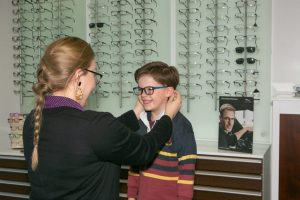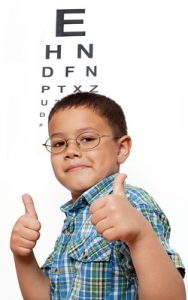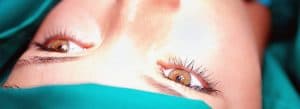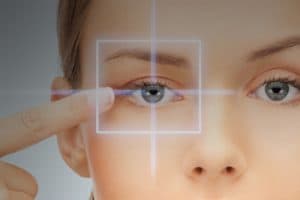2021 Update: Autism (ASD) and Vision
The latest information on autism (ASD) and how optometrists can provide life-changing interventions. Studies of eye clinic records suggest that children with autism (ASD) and
Read More7 Common Pediatric Eye Conditions
Almost 20% of American children under 18 have a diagnosed eye or vision condition. Diagnosing eye problems in childhood can help minimize potential damage and makes treatment faster and more effective. That’s why parents should know about the most common pediatric eye problems and their symptoms.
Read More2021 Update: Vision Therapy for Adults
Vision therapy can be more effective for adult patients, as they are typically more motivated in therapy.
Once an adult starts to notice the results of vision therapy with their own eyes they realize how beneficial it can be for them, motivating them to improve even further.
What to Do Before an Eye Exam?
About to come in for your eye exam? To get the most out of your visit, start preparing with these 4 tips. If you’re experiencing
Read MoreSandwiches and Vision Therapy?
A ‘sandwich’ is when pieces work better together, than each piece on its own … but what has this to do with vision therapy? This
Read MoreLazy Eye Success
Author: Dr. Randy Schulman EyeCare Associates, CT “Vision therapy has helped me ride my bike, and helps me for school in math, writing, and reading. I
Read MoreLazy Eyes Need Binocular Vision Therapy
Vision therapy has been shown to be the most effective solution for lazy eye, as it treats the underlying cause of the condition. A lazy
Read More“Lazy Eyes” Are Not Lazy
If a lazy eye is not really ‘lazy’, then what is it exactly? Lazy eye (amblyopia) is the most common neuro-developmental vision condition, affecting up
Read MoreVision Therapy Builds Confidence
If your child has been struggling in school, they may also be struggling with their confidence and self esteem. Many children who suffer from reduced
Read MoreVision Therapy or Orthoptic Therapy?
Vision therapy and orthoptic therapy are sometimes confused with one another. The information on this page includes everything you need to know about what makes
Read MoreSixth Nerve Palsy
Sixth nerve palsy, also called abducens nerve palsy, is a rare condition that occurs when the sixth cranial nerve, also called the abducens nerve, becomes damaged.
Each year, around 11 in 100,000 people are diagnosed with sixth nerve palsy.
The sixth cranial nerve is responsible for sending signals to the lateral rectus muscle. When the sixth cranial nerve becomes damaged, it prevents the lateral rectus muscle from operating and results in an inward eye turn (esotropia) and double vision.
Read MoreThird Nerve Palsy
Third Nerve Palsy, also called Oculomotor Palsy, occurs when the third cranial nerve becomes injured or diseased.
The third cranial nerve controls the actions of four external eye muscles. As the third cranial nerve controls many of the eye’s muscles and functions, palsy of this nerve can result in complete or partial paralysis of the eye.
Fourth Nerve Palsy
Fourth Nerve Palsy, also known as Superior Oblique Palsy or Trochlear Nerve Palsy, occurs when the fourth cranial nerve becomes diseased or damaged. The fourth cranial nerve controls the actions of the superior oblique eye muscle and is responsible for turning the eye inward and downward.
Read MoreEye Conditions That Can Affect Academic Success
Is your child struggling to keep up with their classmates? A vision condition may be affecting their ability to achieve academic success. The following eye
Read MoreThe Do’s and Don’ts of Vision Therapy
Has your optometrist recommended a program of vision therapy? Vision therapy is an effective program designed to treat a variety of vision conditions that cannot
Read MorePrism Lenses for Double Vision
Double vision is a relatively common problem, and is responsible for 850,000 visits to the doctor and hospital each year. Double vision, also known as
Read MoreDo You Suffer From Headaches?
If you suffer from frequent headaches you may have binocular vision dysfunction. While this may sound concerning, try not to let yourself worry too much,
Read MoreHow Does Vision Therapy Boost Self Confidence?
Could improving your child’s school grades also improve their motivation and self confidence? Many children who suffer from reduced visual skills are not identified and end up struggling through school and even on the sports field – often being mislabeled as clumsy, lazy, or learning disabled and even misdiagnosed with ADHD. These negative stigmas can significantly impact a child’s self esteem and confidence, both inside and outside the classroom.
Read MoreLight: A Form of Therapy?
Author: Dr. Aaron Nichols Excel Neuro-Optometric Clinic Light therapy is now being used as a treatment to help people regain their quality of life following
Read MoreWhat Is Syntonic Phototherapy?
Syntonic phototherapy is a simple, non-invasive light therapy treatment that has been around for more than 70 years. Syntonic phototherapy uses specific light colors, frequencies
Read MoreWhat’s the Deal with Prism Lenses?
Author: Dr. Randy Schulman EyeCare Associates, CT Has your eye doctor prescribed prism glasses or lenses? More recently, people are hearing more and more about
Read More8 Vision Therapy Myths and Facts
Vision therapy is a specialized program prescribed for the treatment of vision conditions that cannot be fully treated with eyeglasses or contact lenses. Unfortunately, there
Read MoreVision Therapy: Glossary of Terms
Have you heard some terms from friends, family or even your eye doctor, that you are not sure what they mean? Here is a guide
Read MoreWhat Is Intermittent Strabismus?
Strabismus, also called an eye turn, can be intermittent or constant— depending on how often it occurs. Intermittent strabismus occurs occasionally, most often during stressful
Read MoreHow Are Prisms Used in Vision Therapy?
Prism lenses can improve vision for clearer, more comfortable binocular vision. Prism lenses, also called yoked prisms, are often prescribed by eye doctors for patients
Read MoreWhat Are Prism Lenses?
Prism lenses can be effectively used to treat vision conditions, such as double vision and other binocular vision difficulties. One of the most common uses for an eye doctor to prescribe prisms is to treat a condition known as Binocular Visual Dysfunction (BVD).
Read MoreVision Therapy for Eye Turns: Success Stories
Personal stories from parents of children diagnosed with an eye turn (strabismus). *Names have been changed for privacy protection. Click here for a list of
Read MoreDouble Vision (Diplopia)
Each year, approximately 850,000 visits to the doctor and emergency room are associated with double vision. Double vision, medically termed diplopia, can be very worrisome.
Read MoreStrabismus Surgery
What is strabismus surgery? Strabismus, also known as “crossed-eyes” occurs when the two eyes are unable to achieve proper alignment to focus on an object.
Read MoreVision Therapy for Adults
Vision therapy is a proven and effective solution for adults as well as children.
Do you feel like your work performance is impacted by headaches or eye strain?
Are you finding it stressful to meet deadlines?
Vision therapy is a remarkably effective program that improves vision skills to achieve more comfortable vision for reading and computer use – enhancing your workplace productivity.
Eyecare for Children
Eyecare for Children Are you worried about your child needing glasses? Do you want to understand why your child needs bifocals or multifocals? Are you
Read MoreExophoria and Esophoria
Has your child been diagnosed with exophoria or esophoria? Both of these may appear as an eye turn, and can be successfully treated with eyeglasses and/or vision therapy.
Read MoreHypertropia or Hyperphoria?
Hypertropia and hyperphoria are when the eyes are misaligned – one pointing higher than the other. Both these forms of eye turn can be well managed by optical lenses and vision therapy, often avoiding eye surgery.
Read MoreVision Therapy FAQs
We are sure you have many questions, these FAQs are the most frequently questions asked by patients and parents to vision therapy eye doctors.
Find answers to your questions quickly and easily.
A Guide to Children’s Eye Diseases
As your child grows older, annual exams are crucial to ensure that their eyes continue to develop normally, and to detect any changes in vision or ocular health. Importantly: vision screenings conducted by schools are not a substitute for a comprehensive eye exam – ocular diseases and many vision problems cannot be identified through a screening.
Read MoreUntil What Age Can a Lazy Eye Be Treated?
Recent research from the National Eye Institute (NEI) shows that a lazy eye can be successfully treated at least up to age 17. Lazy eye
Read MoreAre School Vision Screenings Reliable?
Many schools conduct vision screenings as a service to try to identify vision problems, but are they reliable? The simple answer is, no. These vision screenings are very limited, and are not a substitute for a comprehensive eye examination performed by an eye doctor.
Read MoreVision Therapy Quiz
Could a vision problem be impacting your child’s school performance?
Take a quick quiz to find out.
Take a quick quiz to see if your child could benefit with vision therapy. If your child is not performing to their academic potential, they may be suffering from a vision problem. According to experts, up to 50 percent of children with learning difficulties have a vision disorder that is impacting their ability to learn.
Read MoreCommon Vision Problems Associated With a Brain Injury
Over 10 million traumatic brain injuries (TBI) occur annually, worldwide. Approximately 2.8 million, close to 1 in 100, Americans suffer a form of TBI every
Read MoreVision and Brain Injuries
Can the eyes and visual system be affected by a brain injury? Yes, Traumatic brain injury (TBI) can result in significant vision problems, unfortunately these often remain undiagnosed for years, dramatically impacting the quality of life.
Read MoreEye Conditions That Cause Strabismus
Many common eye conditions can lead to an eye turn. Eye turns affect over 3 people in 100 and can be successfully treated by eye doctors, often without needing complex eye surgery.
Read MoreStrabismus FAQs
Q: Is strabismus surgery the only treatment option for an eye turn? A: No. Strabismus treatment options depend on the type of strabismus— direction of
Read MoreWhat Is Exotropia?
Exotropia is a common form of strabismus characterized by an outward eye turn, away from the nose. Exotropia is a eye turn where one eye points outwards, this may be noticed while the child is looking at distance objects, near objects or both.
Read MoreWhat Is Esotropia?
Esotropia is a form of strabismus (crossed-eyes) that is caused by an inward turn of the eye, toward the nose. This condition can be constant or intermittent and cause an individual to appear ‘cross-eyed’.
Read MoreWhat Is Strabismus (Crossed-Eyes)?
Up to 5% of the population has strabismus, or an eye turn. Strabismus occurs when the two eyes are unable to maintain proper alignment and focus together on an object – one eye looks directly at the object, while the other eye points in a different direction.
Read More










































